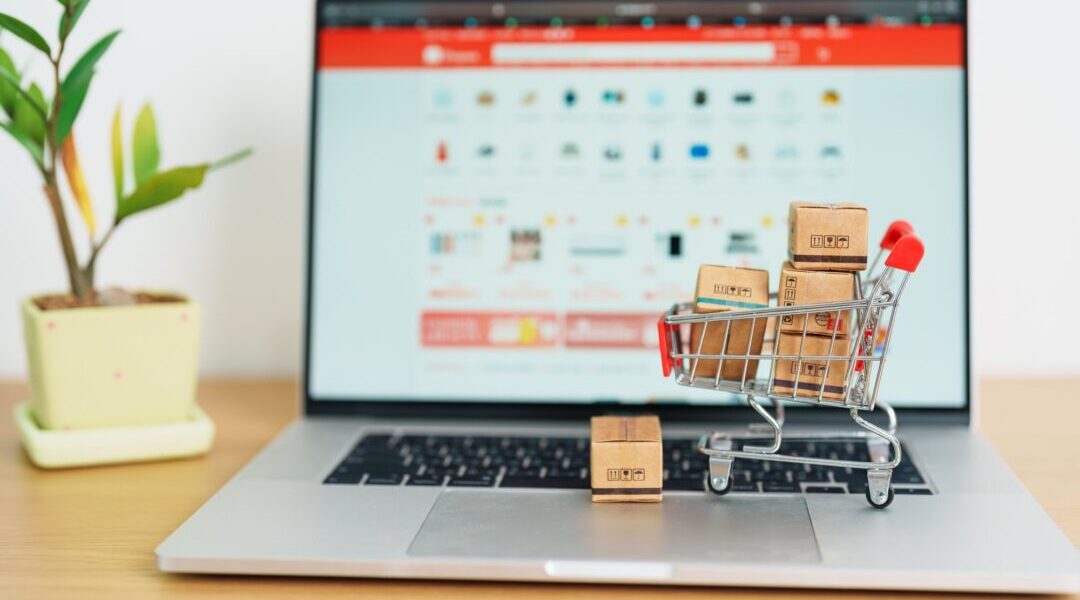To stay ahead of the competition, you have to know how to constantly evolve and adapt your product. So, if your eCommerce store is loading slowly or is no longer scalable, it might be time to consider a platform migration.
A new platform doesn’t just give you the option to add more features; it can also future-proof your business. There are several platforms that provide seamless integration with third-party tools and services, address security concerns, and make it easy to scale your products.
But before you hit that platform migration button, it’s crucial to understand your options. There are a few routes you could take. An out-of-the-box (OOTB) solution comes with a ready-to-go implementation, but a customized setup offers unique functionalities. In this article, we’ll take you through the essential factors to consider when choosing between the two.
What Out-of-the-Box eCommerce Capabilities Do Platforms Have?
An out-of-the-box solution is pre-built software you can purchase and implement quickly. It comes with built-in features and functionalities that cover everything from user experience to back-end operations. Some popular out-of-the-box platforms include Salesforce Commerce Cloud, Adobe Commerce Cloud, Shopify and BigCommerce.
Here are some common features you can expect with an OOTB platform migration:
Templates
Templates are useful for those who need to jump-start their online business. These pre-built themes give you a front-end layout for your website. This foundational design and layout lets you quickly set up a shop without extensive customization.

Some platforms also give you the option to edit the templates. For example, you can add a newsletter widget to an existing template without back-end coding.
API Integration
The application programming interface (API) is like a glue that connects an eCommerce platform with different software. You can integrate core APIs, such as a customer relationship management (CRM) software or an order management system. Other APIs to consider include apps for analytics, reporting, payments, and cataloging.
Payment Gateways
You need a payment gateway to process transactions securely. Most eCommerce platforms have built-in payment gateways that give several payment options. You can also use APIs to integrate external payment apps such as PayPal and Stripe.
Marketing Tools
Migration to a reliable OOTB platform often comes with all-in-one marketing tools. The solution should include the ability to optimize your site for search engines (SEO), integrate plugins for social media, add a newsletter signup form, and allow popups to capture leads.
Analytics and Reporting
Most OOTB platforms give a robust view of data. You should be able to track key metrics such as website traffic, conversion rates, sales performance, and customer behavior. This data is crucial to understand trends and pinpoint areas for improvement.
Mobile Responsiveness
Around 64% of orders are placed via smartphones, so it’s important to have a responsive design that gives a seamless user experience across all devices. Many platforms offer mobile-responsive design out of the box.
What Customizations Do eCommerce Platforms Typically Offer?
The biggest challenge with out-of-the-box eCommerce solutions is that they have limited functionality. So, if you want to scale your store or add a special feature, you’ll need a customized solution.
These platforms allow custom codes so you can tailor your website to your specific needs. For instance, common customizations enable you to:
Build a Headless Architecture
A typical eCommerce store has its front end and back end interconnected. Basically, all the content, media, content management system (CMS), and code run on a single platform. It sounds nice, but this seriously impacts the website load time and makes customizations harder.

The best thing growing eCommerce stores can do to overcome this is to go “headless.” A headless architecture separates the front end (the head) from the back end. You’re then free to add new features and functionalities to the front end without needing to update the back end, too.
With a headless platform migration, your business will be more agile and scalable.
Integrate Microservices
A microservice architecture breaks down complex software into independent services. Each service performs a specific business function, such as search, payment, and shipping. They operate as separate, self-contained units.
This customization is useful if you have an enterprise-level store. Microservices drum up operational efficiency by optimizing workflows. This cloud-based integration also gives your business a competitive edge by lowering costs.
Add APIs for Tailored Solutions
APIs can help you do so much without extensive coding. For instance, you can enable transactions, leverage third-party algorithms for data intelligence, and develop new user experiences.
Say your customers are abandoning their shopping carts. You can use an API to create a customized checkout flow that supports a cart abandonment strategy. You might deliver an exit intent pop-up when they try to leave the cart without purchasing and offer an incentive to close the deal.
OOTB vs Custom eCommerce Platform Migration: Which Do You Need?
Both approaches have merit. An out-of-the-box eCommerce solution will give you a faster time-to-market because it has pre-built templates and themes. You can set up and start selling within a few days of platform migration.
OOTB is also cheaper. The pre-built features mean you don’t have to spend extra on web development and customizations. However, this is also its biggest limitation. Pre-built features and themes might cause your store to look generic. They also make your store less flexible and agile.
A custom eCommerce platform offers unparalleled flexibility. You can design a store that aligns with your branding and user experience goals. Custom solutions are also more scalable because you aren’t limited by pre-built constraints. Of course, their drawback is that they cost more. A custom migration will need more time, resources, and extensive coding than an OOTB solution. It also has a longer time-to-market.
Platform Migration Made Easy With Zobrist
The right platform migration strategy depends on your business needs. Smaller businesses and those just starting out can benefit from OOTB as it gives a faster time-to-market. But if you have a large enterprise, you should consider customizing your eCommerce architecture.
Zobrist offers several solutions to make your platform migration easier. We can help you build a headless architecture, high-converting payment pages, and an analytics dashboard. Plus, our smart visual merchandising tool will make your storefront pop!
Are you ready to take your eCommerce store’s shopping experience to the next level? Contact us today for a consultation.




